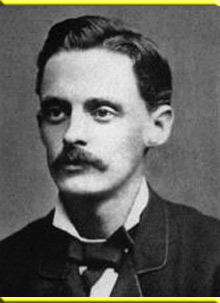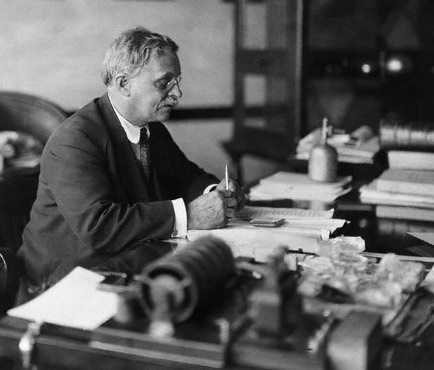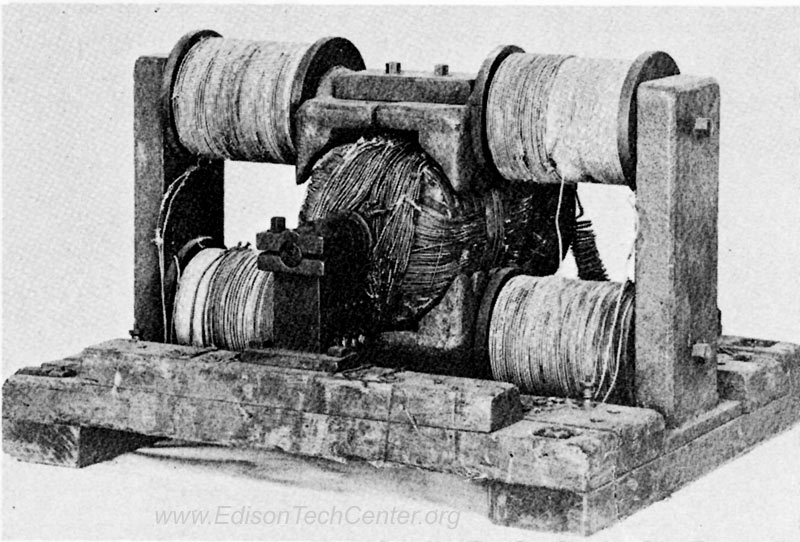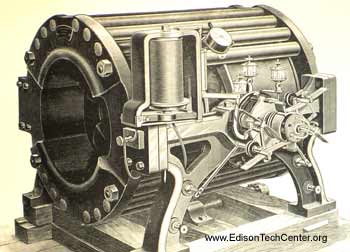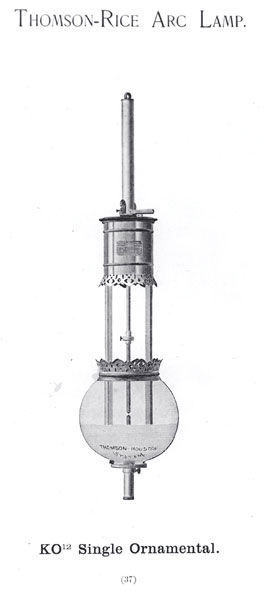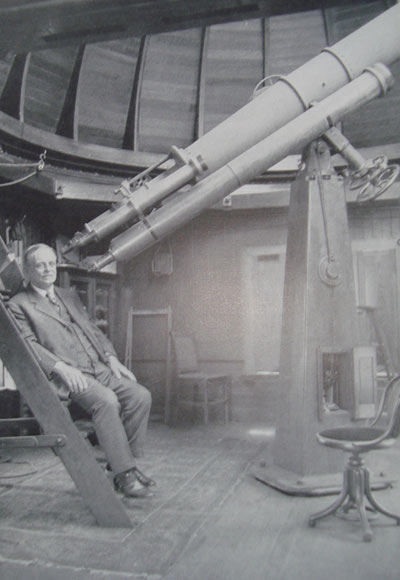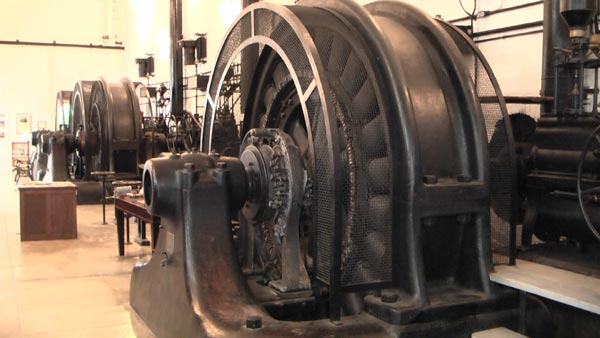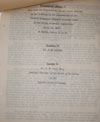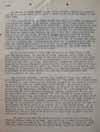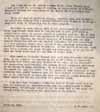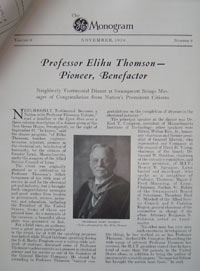
|
Engineering Hall of Fame |
Elihu
Thomson
The
accomplishments and life of Elihu Thomson, 1853-1937
|
Elihu Thomson 1880 |
Elihu Thomson: "Second only to the mighty Edison!" - unknown
Elihu Thomson was one of the greatest early pioneers of DC and AC power. Thomson was born in Manchester, England in 1853. He moved to Philadelphia, then to Swampscott, Massachusetts while working for General Electric in Lynn. Thomson was instrumental in the start of electric arc lighting along with Charles F. Brush. He had a talent for understanding and controlling electric power when the field was just begining.
See the film transcription below to learn about his life.
Awards: Grashof Denkmueze (Grashof Memorial Medal), Rumford Prize, Edison Medal, French Legion of Honor, John Fritz Medal, Hughtes Medal
Schools: Yale, Tufts, Harvard
Publications/Patents: Made 700-800 patents internationally on many sorts of apparatus. Created many papers for many journals over his life time.
Elihu Thomson and E.W. Rice Interview
Transcription of the sound film of 1932:Edwin W. Rice Jr. interiviews Elihu Thomson about his life as an electrical pioneer at Dr. Rice's home on Lenox Rd, Schenectady New York.
Interview with audio on June 21, 1932. Recorded using RCA Photophone technology and synchronized with 16 mm film. Transcript made by the Edison Tech Center May 2010
Unclear parts of the film are marked with ???.Rice: Im very glad you came today
Thomson: Im very glad to be here
Rice: Arrive by motor?
Thomson: Yes, very pleasant trip over, starting yesterday morning from Lynn
Rice: very glad to be here
Rice asking Thomson: I think you remember that we made arrangement while Louis Robinson was alive to take pictures of past President of AIEE, living presidents of course, and you were one of the earliest, there are very few that are still alive of your time, we'd be very happy indeed if you could tell us and AIEE members of your life, so productive.
Thomson: I can do so I think, 65 years ago, about 65 years ago i came across the ocean from england, my family settling in Philadelphia, I there attended the public schools, and the boys central high school eventually, but there was an issue there, ??? was not a direct succession, I was forced out of school at 11 to stay out 2 years, the entrance age of the high-school was 13, and I was only 11. So the problem was what to do with me, with the two extra years, well some of them some advisors said keep him away from books and he can develop physically. I said you mind as well as kill me know, I've got to have my books. I multiplied the decision until they said, you can have them, all right. So I got a hold of a book, call the Magician's Own book, a book telling of puzzles and tricks and all kinds of little things, chemistry experiments, and electrical experiments, the electrical chapter was what struck me at once, told me how to make an electrical machine out of a wine bottle, and I immediately set to work , i made the machine, started in operation, got my first view of electric sparks from that machine, my first knowledge of electricity from that machine. I made a whole lot of apparatus which was recommended to be made, like lightning jars and little things of attraction and repulsion, dancing figures and so on, and I had the whole equipment along with a stool made by bottles and a board in order to insulate the person who wanted to be charged. With this my father foo-food the magnitude of the the whole thing and I thought I'd get even with him somehow, so I made a battery of five jars, and put them into operation, asked him to take the shock I never heard after he took that shock any more ??? remarks about my apparatus.See this section of the film below (YouTube Video)
See the first part of the interview below (The volume is low on this clip). (This clip is mixed with 2010 video of the same house)
TRANSCRIPT CONTINUED:
6:33 - Rice close shot, asking Thomson, two shot -
Rice: I was very interested to hear you state that had your first interest in electricity from reading a book. I recollect that this is what happened to Joseph Henry one of our greatest pioneers as you know. I met you 1876 you had just been made a full professor in high-school, I also remember that you gave lectures at the Franklin Instituted did a elec. invention while i was a pupil.
Thomson: i began my career in electrical development while still teaching as a prof. in chemistry, I gave five lectures in 1877, Rice: I heard those: Thomson: the next year, 1878, with prof. Houston made some tests.. on dynamos what we could get at the time, shortly after that i designed and built a dynamo for a single arc light, and that formed the basis for the later Thomson-Houston Arc Light system, which involved several features, one of them was the 3 phase windings, the first 3 phase windings ever produced, and the other was the automatic regulating system which kept the current in a light circuit at an even value no matter how many lights were on that circuit the first arc light system had shutting shunts to put them out. then they came along and it became necessary keep simplicity yet produce large numbers of lights...70-80 lights...it was impossible unless we had another invention and that was the air blast mechanism for... introduce air instead of metallic vapor at the zeros of the ??? The other lighting arrester for preventing the short circuiting the ??? to ground.
Elihu Thomson's first dynamo built for a demonstration at the Franklin Institute in the 1870's
Rice: It seems to me those particular things mentioned are reasons lead to the success of the Thomson Houston system and lead to the putting out of business of the competition which was established before.
Thomson's early commerically sold dynamos (1880's)
Thomson: May I be permitted to include the human element, say, one of the elements of that system and the success of that system was yourself.
Rice: that is very kind but we also have to add that
Thomson: and that I also have to add further on, later on, Mr. Coffin, the head of the institution
Rice: i was going to make that same suggestion , none of us would be here without your wonderful work, the inspirations you gave us all
these events you described briefly happened in New Britain, Connecticut. We left New Britain some time in 1893, 1883![he corrects himself]now you kindly tell us what happened between 1883 and 1892 when the general electric company was formed by the consolidation of the Thomson-Houston and Edison companies.
A Thomson-Rice Arc Lamp mentioned in the film
Thomson: Well, its a long story but I will have to cut it short, well I have to say this that the developments went on at an increased pace under the encouragement of the new management in Lynn, and during that time we developed new types of arc lamps the M and K Thomson-Rice lamp, which became a standard, then we took up incandescent lighting, we took up the Alternating Current transformer system which I had outlined as far back as 1879 at the Franklin Institute. And we built the system but didn't consider it safe until the development of the earthing of the secondary, which was an invention of mine for securing the safety of the secondary lines of the transformer systems, then we went on from to the development of electric welding, which was a separate idea, and a second company was established to carry that on, its now called resistance welding, electric resistance welding,
Rice: That was a new arc!
Thomson: That was an entirely new arc, nothing ahead of it at all, and it has reached an enormous development today, after these developments, we were continually refining [12:22min.] and making new affairs, I ought to mention that in the early days we had carried on apparatus to experiments to ??? back in wireless telegraphy the first probably ever made. sending waves through a building and picking up on the other side. The list would make a very long one with numerous inventions,
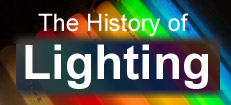 |
|
Rice: The electric street railway
Thomson: the very important thing before the consolidation was the development of the railway system. To do this effectively Mr. Coffin asked me if there was anyone in the world who had done the most work, original work in the railway, I said yes there was, the man was Mr. Charles J. Van Depoele who had done a lot of work, Mr Coffin said to me "can we get him?" I said "why I think so, he's in Chicago and I think he's practically retired, I'll send out for him, the result connected vandepoul with our system, and Bently-Knight also came into the company, ??? railway engineer,
Rice: Van Depole also contributed the carbon brush,
Thomson: Oh yes, a very important method, a very important method, we had trouble with motors on cars, everybody had trouble, due to the fact that they were using metallic brushes, Van Depoele was called into conference with several others, Mr. Rice among them to find out if there was any remedy for the troubles. Van Depoele said in a modest way, well some years ago I had used a carbon plate, a carbon brush, he was told, i think I said this myself "that doesn't seem very reasonable but we must try everything, and we tried everything, and we tried the carbon brush, and the carbon brush is one of the greatest successes we ever made in the electric arc, not only motors, but for generators, all ??? apparatus.
Rice: most interesting professor, I did not hear you say anything about the revelation of transformers which I think you originated about this period or the electrodynamic propulsion experiments, that lead to useful things, the induction motor for example, would you kindly tell us something about those.
Thomson:
15:20 TC - About the time of the development of the transformer it occurred to me that we must have good cooling, especially large transformers that was the time of the development of the cooling systems by water, by air, by oil. Then there came along the electric meter, and about the same time came measuring the RW meter ??? ??? [no audio here]
Rice: That is the one that obtains a prize in 1889,
Thomson: 1890 [he corrects Mr. Rice], Then after followed the nitro-inductive apparatus formed formed basis of propulsion meter and many other devices that I will not mention now. Up to that time I think we were so actively engaged that business arraignments were ??? ???.
Rice: during this time period you were president of the American Institute of Electrical Engineers in 1889 if I remember?
Thomson: Yes and I had the duty of representing the AIEE in London at a gathering of 600 engineers 300 from america and also representing the institute at Paris exposition of 1889. I think what I have said in this record is sufficient to outline the ??? possibility ??? and the work that has been done in a very many years, and some of the possibilities of the future may hinge on those devices. Im
Rice: I'm sure that we are all delighted and thank you for what you have told us of your most interesting life and the contributions you have made to electrical engineering and other lines of activities, I might say for the necessary benefit of our audience that professor thomson has taken out 700-800 patents of various kinds, he's received about every medal of merit including the famous Kelvin medal. The name of Elihu Thomson is known throughout the civilized world for the work he has done and he is beloved by all those who know his wonderful personality... It is a very great pleasure to me to be with him, and to have this opportunity to help him record what happened in the early days.
Thomson: Thank you Mr Rice
Elihu Thomson at his observatory in Swampscott, MA
Thomson, a Pioneer of AC Power:
In 1891 Thomson and C.P. Steinmetz built upon rudimentary AC generator designs from Europe, they developed larger and more advanced designs which they sold under the General Electric name throughout the 1890's and later. Elihu Thomson is another victim of the Tesla Myth, Thomson developed many things that have been improperly attributed to Tesla. Thomson was a major proponent of AC power in General Electric at the time Thomas Edison was still "stuck" on DC power. General Electric and Westinghouse worked simultaniously on building AC power technology, this is contrary to the Tesla Myth that states that Tesla and Westinghouse were the only ones promoting AC power. AC power's roots were in Europe before North American inventors had began experimenting with it. Thomson was a visionary to see that AC was the way of the future and quickly adopted it. He had actually been working with AC power since 1885 when he did his first experiment with transformers, sending power from factory A to factory B in Lynn, Massachusetts. In the end William Stanley proved the most successful in transformer design, however Thomson did go on to work with Stanley once they came under the same company (GE) in 1892.
See one of Thomson's early AC generators at this power plant in Folsom, California (photo above and video below)
See one of Thomson's early AC generators at this power plant in Folsom, California
Documents about Elihu Thomson Collected by the Edison Tech Center:
Click on the document to view it at high resolutionGrashof Memorial Medal 1935.
Response of Elihu Thomson with remarks by E.W. Rice Jr.Grashof Denkmueze (Grashof Memorial Medal) Boston, MA
Opening
Opening Pg. 2
Elihu Thomson's Response
E.W. Rice's comments
The Monogram November 1930
Professor Elihu Thomson- Pioneer, Benefactor
Neighborly Testimonial Dinner at Swampscott Brings Messages of Congratulation from Nation's Prominent CitizensPage 1 Page 2 Page 3 Page 4 Page 5 Page 6 Page 7
Remarks on Professor Thomson
to Students of the Breed Junior High School at West Lynn
March 29, 1937 by John A. McManus - Secretary to the late Elihu Thomson
(A great work of his life's story)
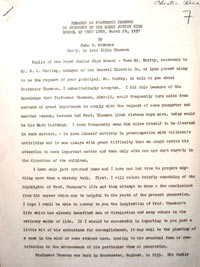
Talks about his father, father's work, his beginning at school, getting into electricity, his adult life. ends with "May the spirit of Elihu Thomson be with you as a shining light to direct your efforts and to inspire you with the joy of achievement, which Professor Thomson has often said was the greatest reward, after all, that one can experience."
Pioneers of Electricity (Includes Thomson) (YouTube Video)
Books on Elihu Thomson:
This part not completed, please email and and suggest some.
Visit the Edison Tech Center in Schenectady to see our collection of historic books on engineering
Back to the Engineering Hall of Fame
Sources:
-Men and Volts. 1941. by John Hammond
-The General Electric Story. 1999. Hall of History Publications
-Various documents from the archives of the Schenectady Museum
-Chester T. Rice's saved documents- see above
-www.wikipedia.com
-Schenectady Historical Society and also from
-General Electric company photographers who rescued the photos before GE threw out it's enormous historical records
-Schenectady Museum archives (the original 16 mm film)
-Edison Tech Center collectionsPhoto/Video use:
Commercial entities must pay for use of photos/graphics/videos in their web pages/videos/publications
No one commercial or public is allow to alter Edison Tech Center photos/graphics/videos.
Educational Use: Students and teachers may use photos and videos for school. Graphics and photos must retain the Edison Tech Center watermark or captions and remain unmanipulated except for sizing.Permissions - Videos: We do not email, FTP, or send videos/graphics to anyone except in DVD form. Payment is needed for this service. See our donate page for pricing, and our catalogue for a listing of videos on DVD.
Professional video production companies may get videos in data form with signed license agreements and payment at commercial rates.
